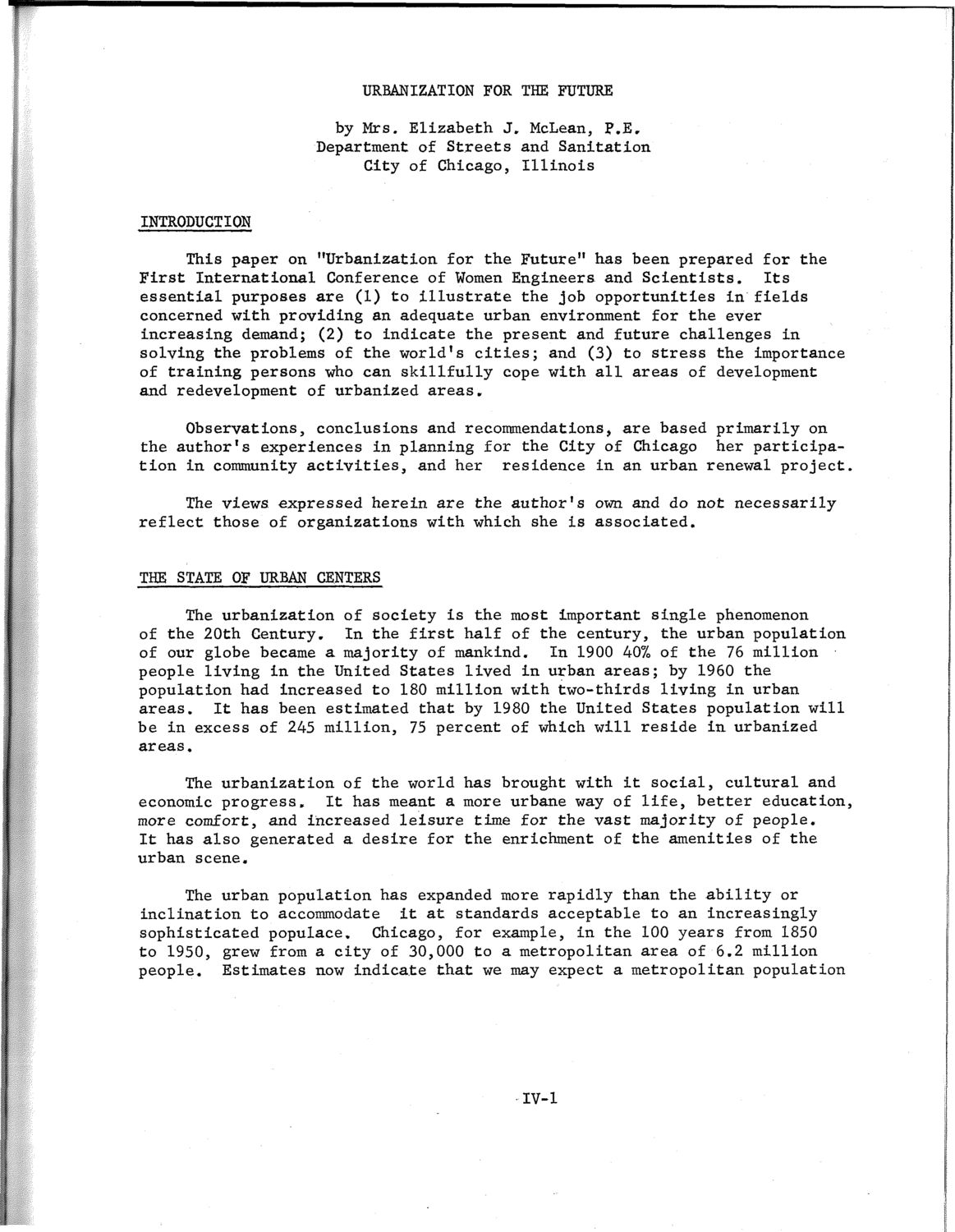| |
| |
Caption: SWE - Proceedings of the First International Conference of Women Engineers and Scientists
This is a reduced-resolution page image for fast online browsing.

EXTRACTED TEXT FROM PAGE:
URBANIZATION FOR THE FUTURE by Mrs. Elizabeth J. McLean, P.E. Department of Streets and Sanitation City of Chicago, Illinois INTRODUCTION This paper on "Urbanization for the Future" has been prepared for the First International Conference of Women Engineers and Scientists. Its essential purposes are (1) to illustrate the job opportunities in fields concerned with providing an adequate urban environment for the ever increasing demand; (2) to indicate the present and future challenges in solving the problems of the world's cities; and (3) to stress the importance of training persons who can skillfully cope with all areas of development and redevelopment of urbanized areas. Observations, conclusions and recommendations, are based primarily on the author's experiences in planning for the City of Chicago her participation in community activities, and her residence in an urban renewal project. The views expressed herein are the author's own and do not necessarily reflect those of organizations with which she is associated. THE STATE OF URBAN CENTERS The urbanization of society is the most important single phenomenon of the 20th Century. In the first half of the century, the urban population of our globe became a majority of mankind. In 1900 40% of the 76 million people living in the United States lived in urban areas; by 1960 the population had increased to 180 million with two-thirds living in urban areas. It has been estimated that by 1980 the United States population will be in excess of 245 million, 75 percent of which will reside In urbanized areas. The urbanization of the world has brought with it social, cultural and economic progress. It has meant a more urbane way of life, better education, more comfort, and increased leisure time for the vast majority of people. It has also generated a desire for the enrichment of the amenities of the urban scene. The urban population has expanded more rapidly than the ability or inclination to accommodate it at standards acceptable to an Increasingly sophisticated populace, Chicago, for example, in the 100 years from 1850 to 1950, grew from a city of 30,000 to a metropolitan area of 6.2 million people. Estimates now indicate that we may expect a metropolitan population IV-1
| |